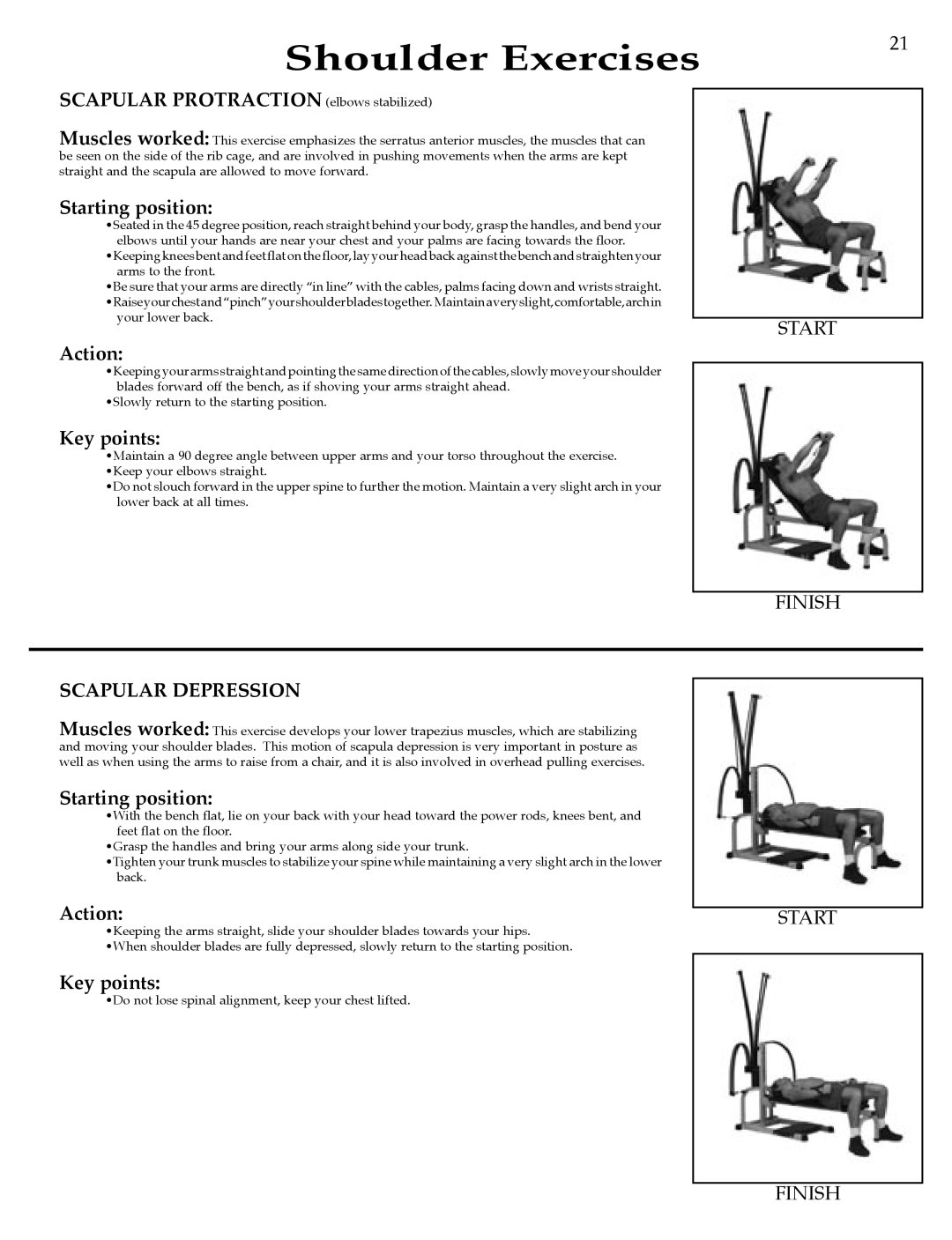
Shoulder Exercises
SCAPULAR PROTRACTION (elbows stabilized)
Muscles worked: This exercise emphasizes the serratus anterior muscles, the muscles that can be seen on the side of the rib cage, and are involved in pushing movements when the arms are kept straight and the scapula are allowed to move forward.
Starting position:
•Seated in the 45 degree position, reach straight behind your body, grasp the handles, and bend your elbows until your hands are near your chest and your palms are facing towards the floor.
•Keepingkneesbentandfeetflatonthefloor,layyourheadbackagainstthebenchandstraightenyour arms to the front.
•Be sure that your arms are directly “in line” with the cables, palms facing down and wrists straight. •Raiseyourchestand“pinch”yourshoulderbladestogether. Maintainaveryslight,comfortable,archin
your lower back.
Action:
•Keepingyourarmsstraight andpointingthesamedirection ofthecables,slowly moveyourshoulder blades forward off the bench, as if shoving your arms straight ahead.
•Slowly return to the starting position.
Key points:
•Maintain a 90 degree angle between upper arms and your torso throughout the exercise. •Keep your elbows straight.
•Do not slouch forward in the upper spine to further the motion. Maintain a very slight arch in your lower back at all times.
21
START
FINISH
SCAPULAR DEPRESSION
Muscles worked: This exercise develops your lower trapezius muscles, which are stabilizing and moving your shoulder blades. This motion of scapula depression is very important in posture as well as when using the arms to raise from a chair, and it is also involved in overhead pulling exercises.
Starting position:
•With the bench flat, lie on your back with your head toward the power rods, knees bent, and feet flat on the floor.
•Grasp the handles and bring your arms along side your trunk.
•Tighten your trunk muscles to stabilize your spine while maintaining a very slight arch in the lower back.
Action:
•Keeping the arms straight, slide your shoulder blades towards your hips. •When shoulder blades are fully depressed, slowly return to the starting position.
START
Key points:
•Do not lose spinal alignment, keep your chest lifted.
FINISH
